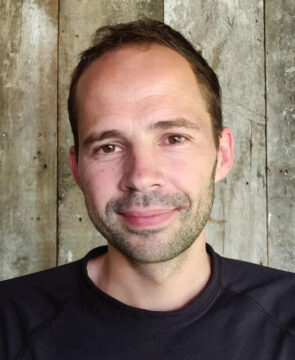Venue: Centre Broca

David Thura, Ph.D Neuroscience
Principal Investigator–Inserm CRCN
Lyon Neuroscience Research Center -ImpAct Team
Inserm U1028 –UMR 5292
Invited by Marc Deffains (IMN)
Title
Are the basal ganglia involved in action selection or action invigoration?
Abstract
Despite decades of investigations, the role of the basal ganglia during goal-directed behavior is still debated. Among the different functions assigned to these sub-cortical nuclei, action selection is a popular and influential one. It is indeed often proposed that choices are determined through the dopamine-dependent direct and indirect pathways, respectively selecting one option while inhibiting others. More recently however, it has been suggested that the basal ganglia instead compute decision and movement vigor (duration, speed).
In this presentation I will first describe experiments in which monkeys performed visually-guided choices between reaching movements. I’ll show that sensorimotor cortical neurons strongly and very early reflect the direction of the selected movement. By contrast, globus pallidus neurons, especially its internal segment, are almost untuned for movement direction until very late during the deliberation. Instead, they show some kind of ramping (or decreasing) activity that we interpreted as the neural signature of urgency to decide.
Then, I will describe very recent data collected on a monkey trained to perform a simple reaching-based foraging task. We conducted simultaneous recordings in PMd and in the dorsal striatum while the monkey was performing the task. Neural state space analysis shows that the directional selectivity emerges much earlier in the cortex compared to the striatum. Moreover, both cortical and striatal neural trajectories show strong relationship with exploitation duration and exploration speed. These two processes are represented in the same sub-space of the neural state, suggesting that the striatum and the cortex work together to coordinate the duration of the decision to exploit with the vigor of the exploration.
Together, the data support a role of the basal ganglia in the coordination and the invigoration of decisions and actions, leaving the role of selection to other structures, including the sensorimotor cortex.
Biosketch
My Ph.D. research in Driss Boussaoud’s lab focused on the FEF, a major component of the cerebral network that is thought to contribute to decision making, as well as to visual and oculomotor processes. We used single-neuron recordings in monkeys to test the hypothesis that FEF neurons integrate signals from the hand to ensure adapted ocular exploration of peripersonal space.
My post-doctoral position in Paul Cisek’s lab provided me with the opportunity to pursue the exploration of complex integrative functions, i.e. decision making, in brain regions such as PMd, M1 and PFC. We investigated the neural correlates of dynamic decision-making in monkeys trained to perform a reach decision task. We showed that premotor and primary motor cortex activity reflects the competition between potential options and signals the commitment to a choice before movement initiation.
As a research associate in Paul Cisek’s lab at University of Montreal, we explored the behavior and the neural bases of speed-accuracy trade-off adjustments during dynamic decisions and movement execution. We investigate this question under the affordance competition and the urgency-gating frameworks.

